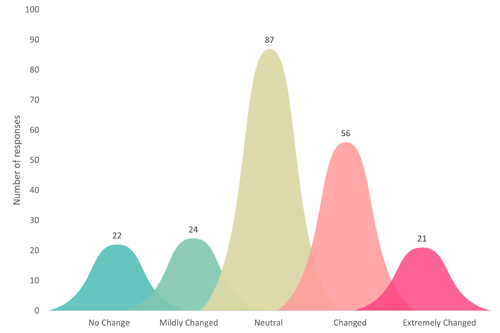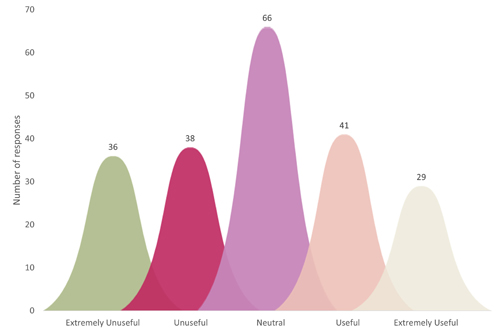Authors: S.M. Rakibul Islam, Nabarun Halder, Ashraful Islam, Eshtiak Ahmed, Sheak Rashed Haider Noori
Posted: Fri, June 03, 2022 - 11:41:22
The sudden appearance of Covid-19 forced people to stay at home due its highly infectious nature. Governments shut down countries; economies and businesses collapsed. The education system was no exception; rising Covid-19 cases forced schools to shut down. According to UNESCO, Covid-19 afflicted 37,694,522 students as of January 2022 [1]. Since educational facilities halted in March 2020, Bangladeshi students have been deprived of adequate time for instruction and for connecting with classmates, both of which significantly harm their educational experience. Like many countries, Bangladesh had to move to an online education system [2]. While the online program was able to overcome some of the inevitable difficulties, many people questioned its efficacy and acceptability. Taking this into account, our research looks at the views and opinions of students regarding the efficacy of virtual classrooms and how these classrooms could be an alternative to a traditional, in-person classroom setting.
We used Google Forms to create an online survey about students' perspectives on online education [3]. To develop the survey, we carried out a literature review of related works and conducted informal interviews with students who attended online classes [4]. The survey consisted of both quantitative and qualitative inquiries centered around a set of four types of questions: participants' characteristics, how they attended online classes, their online learning platform experience, and their overall experience. The survey involved 210 students, with educational backgrounds ranging from high school to postgraduate. Of the participants, 88.6 percent were undergraduates and 92.9 percent were between 18 and 25 years old (Table 1). Most participants were from urban areas (63.3 percent). We performed a percentage analysis on the data from the survey using Google Forms' built-in features and Microsoft Excel.
|
Demographic Information |
Characteristics |
Number of Participants |
|
Education level |
High school/secondary (Grade 6 to 10) |
2 |
|
Higher Secondary (Grade 11 to 12) |
7 |
|
|
Undergraduate |
186 |
|
|
Postgraduate |
15 |
|
|
Gender |
Female |
68 |
|
Male |
142 |
|
|
Age (years) |
10 to 17 |
3 |
|
18 to 25 |
195 |
|
|
26 to 32 |
11 |
|
|
33 to 40 |
1 |
|
|
Residence area |
Suburban |
34 |
|
Rural |
43 |
|
|
Urban |
133 |
Poor Internet connectivity was one of the most significant challenges for online classes [5]. Our study reports that nearly half (45.2 percent) of the participants had poor Internet access. Most students used Android smartphones and mobile data for online classes (Table 2). However, a majority of students (84 percent) had no previous experience with online classes. Most of them preferred in-person classes to recorded ones. According to our findings, most participants who did not understand a topic in an online class asked the instructor questions. In contrast, many students who watched recorded videos didn't ask questions. Regarding relationships between classmates, about 80 percent of the respondents felt that online classes created distance between them and their classmates. There was a mixed response to teacher-student interaction.
|
Technical Information |
Characteristics |
Number of Responses |
|
Devices used |
Tablet computer |
2 |
|
iPhone/iOS smartphone |
14 |
|
|
Desktop computer |
27 |
|
|
Laptop computer |
108 |
|
|
Android smartphone |
161 |
|
|
Internet accessibility |
Public Wi-Fi |
36 |
|
Broadband connection |
103 |
|
|
Mobile Internet packages |
127 |
|
|
Platforms used |
University’s Blackboard |
1 |
|
Skype |
2 |
|
|
Microsoft Teams |
6 |
|
|
Facebook Live |
11 |
|
|
Zoom |
71 |
|
|
Google Meet |
163 |
|
|
Communication with new classmates |
Never communicate with them |
60 |
|
Personal message |
91 |
|
|
Instant messengers and social media groups |
150 |
Most participants stated that being unable to physically meet with teachers negatively affected their education. Many felt less motivated to discuss any topic in an online class. As a result, students were less eager to discuss any issues with the teacher after class. In terms of changes in instructions in the online class, 50.95 percent of participants expressed "instructors spend less time on guiding students on changes in directions in the online class" and "instructors spend less time explaining topics"; 36.67 percent stated that "instructors take fewer feedbacks"; and 45.24 percent of participants agreed with the following statement: "To demonstrate a topic, instructors use fewer visuals." Just over 41 percent of students were neutral about changes in lecture materials (Figure 1).

Figure1. Participants’ votes on how lecture materials and directions are changed.
Participants did not have a clear preference about where they took tests, but they had some complaints about the testing process. They stated that open-book exams caused teachers to generate complex tasks that might take longer to solve than the time given for exams, and that teachers could not evaluate their efforts properly. In addition, poor Internet connectivity and the inadequacy of devices were significant barriers to students participating in online tests. The main complaint about online classes and tests was that students could not concentrate for a long period of time. Students also mentioned falling asleep during classes and noisy environments while attending classes at home. In terms of class participation and performance evaluations, most students preferred assessment at the end of the week. Still, many students appreciated checking in for each class; some also mentioned that they enjoyed the assessments at the end of the course or semester. A few of the main complaints from students using online learning systems were that teachers used fewer images to demonstrate concepts, spent less time explaining subjects than before, and took less feedback from students. Approximately 33.3 percent were neutral about learning from online classes, with extremely confident students around 11.9 percent and extremely unconfident students around 17.1 percent (Figure 2).

Figure 2. Participants’ votes on how lecture materials and directions are changed.
On whether online lessons were advantageous, 31.4 percent students were neutral and 17.1 percent considered online classes extremely unuseful. In comparison, online classes were considered useful by 19.52 percent of students (Figure 3).

Figure 3. How useful online classes were to participants.
Students understood that the pandemic prevented in-person learning. They recommended that some changes to online education be implemented, including limiting the length of virtual classes, ensuring an uninterrupted Internet connection, and, at a lower cost, utilizing additional visuals or examples to demonstrate a topic, taking immediate feedback after discussing a topic, and guiding students on the necessary steps for the next session of that course/class. Some complications in students' use of online platforms were observed, among them excessive amounts of data transmission due to video lecture distribution, the inability to transmit bigger files to or from the instructor at a lower Internet speed within a shorter and fixed time frame, and inconsistent attendance. The survey findings indicate that the students would be interested in online education if the aforementioned recommendations are heeded and the issues resolved. Despite the limitations indicated by survey participants, it is obvious that an online education system may serve as a viable alternative to traditional classroom education in an emergency such as the Covid-19 pandemic, and that virtual classrooms can minimize disruptions in continuous learning.
Endnotes
1. UNESCO. Education: From disruption to recovery; https://en.unesco.org/covid19/educationresponse
2. Abdullah, M. 2020: The rise of online education. Dhaka Tribune. Dec. 31, 2020; https://www.dhakatribune.com/bangladesh/2020/12/31/2020-rise-of-online-education
3. Halder, N., Islam, S.R., Hosain, M.S., Ahmed, E., Islam, A., and Noori, S.R.H. Efficacy and acceptance of virtual classrooms during covid-19: Bangladesh perspective. Proc. of 3rd International Congress on Human-Computer Interaction, Optimization and Robotic Applications. IEEE, 2021, 1–6.
4. Muthuprasad, T., Aiswarya, S., Aditya, K., and Jha, G.K. Students' perception and preference for online education in India during Covid-19 pandemic. Social Sciences & Humanities Open 3, 1 (2021), 100101.
5. Adnan, M. and Anwar, K. Online learning amid the Covid-19 pandemic: Students' perspectives. Online Submission 2, 1 (2020), 45–51.
Posted in: on Fri, June 03, 2022 - 11:41:22
S.M. Rakibul Islam
View All S.M. Rakibul Islam's Posts
Nabarun Halder
View All Nabarun Halder's Posts
Ashraful Islam
View All Ashraful Islam's Posts
Eshtiak Ahmed
View All Eshtiak Ahmed's Posts
Sheak Rashed Haider Noori
View All Sheak Rashed Haider Noori's Posts







Post Comment
@justinscott (2025 06 13)
During the pandemic, I witnessed how virtual classrooms became both a lifeline and a challenge for Bangladeshi students. While accessibility improved health care facilities Los Angeles for some, issues like poor internet and limited devices created learning gaps. Understanding these barriers helped me advocate for more inclusive, tech-supported strategies in remote education moving forward.